X-47B UCAS-D
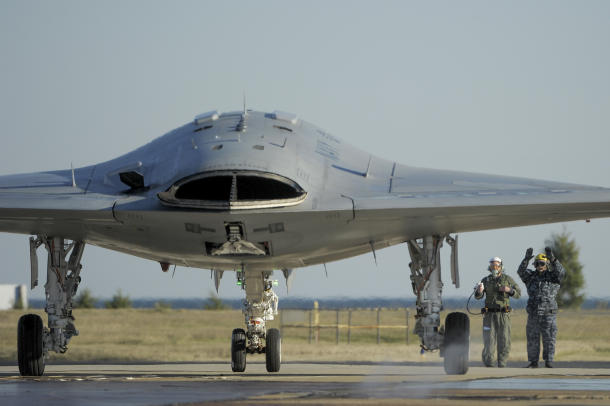
Northrop Grumman's X-47B is part of the U.S. Navy's Unmanned Carrier Air System Demonstration (UCAS-D). NAVAIR's PMA-268 is responsible for managing the UCAS-D program, which was created to mature technologies for a carrier-suitable, low observable unmanned air system (UAS). Some evolution of the X-47B is also a contender for the Navy's follow-on UCLASS competition.
The first flight of the X-47B took place in February 2011 at Edwards Air Force Base in California.
In November 2012, the aircraft's wireless Control Display Unit was tested to practice taxiing the aircraft in the confined spaces it will face onboard an aircraft carrier's flight deck and hangar. In December 2012, the X-47B completed a series of deck handling and taxi tests over a two week period at sea aboard USS Harry S. Truman (CVN 75) in preparation for take off and landing trials in early 2013.
The aircraft completed its first catapult launch from USS George H W Bush (CVN 77) on 14 May 2013 and touch and goes on the same ship on 17 May. On 10 July 2003, UCAS-D call-sign "Salty Dog 502" completed two arrested recoveries, or "traps," on the deck of USS George H.W. Bush (CVN 77).
On 26 June 2014, the Navy announced the award of a $63 million Phase II contract for post-demonstration development and testing to continue through March 2015.
In August 2014,the X-47B conducted series of flights from the aircraft carrier USS Theodore Roosevelt (CVN 71) in combination with an F/A-18 Hornet.
On April 22, 2015, Salty Dog 502 took on 4,000 pounds of fuel from an Omega Aerial Refueling Services Boeing 707 tanker in the first ever airborne refueling of an unmanned aircraft. Both 502 and 501 will be retired after this testing.
In August 2017, it was revealed that the X-47B was configured as a flying testbed for the MQ-25A Stingray program.
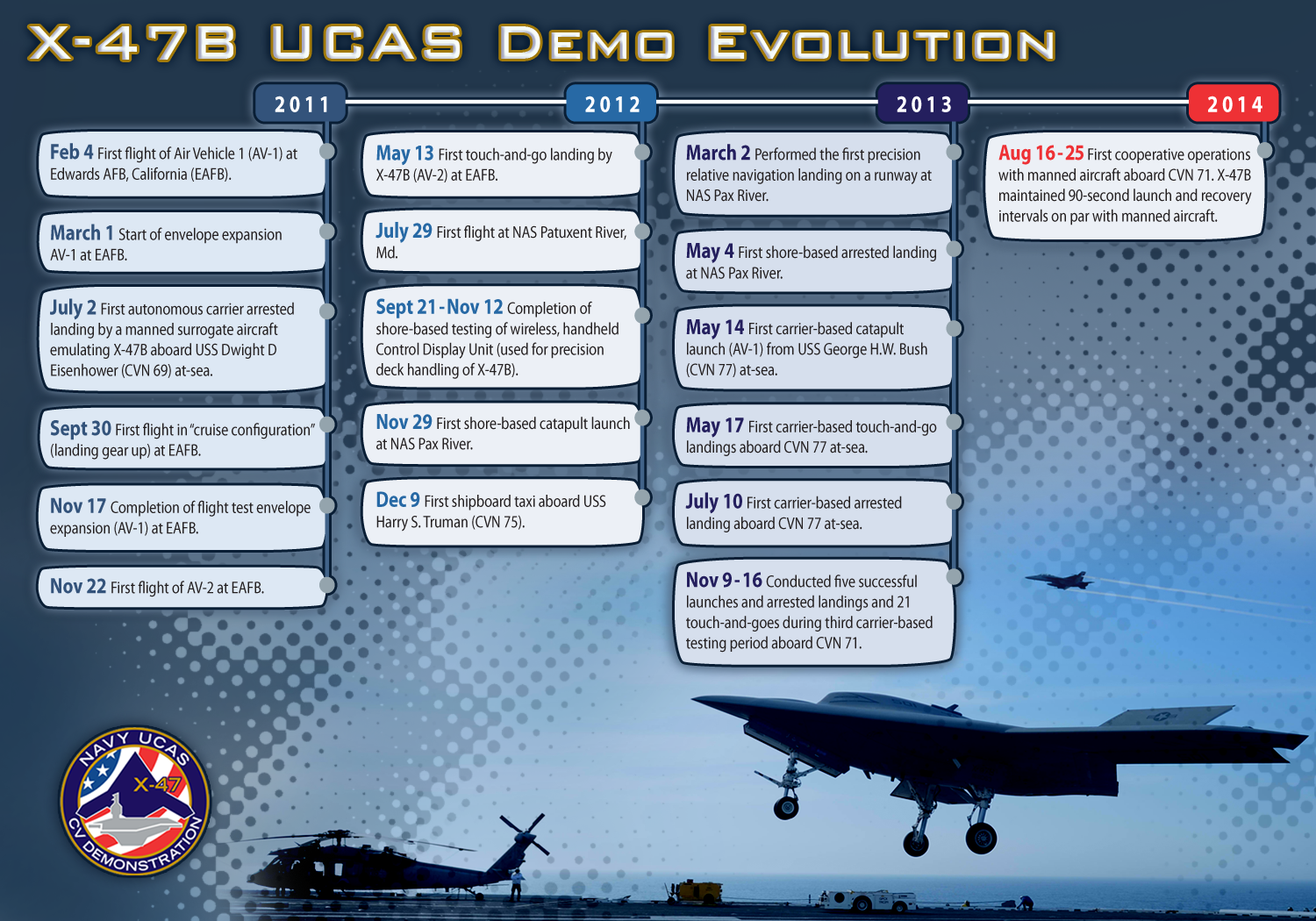
U.S. Navy image.
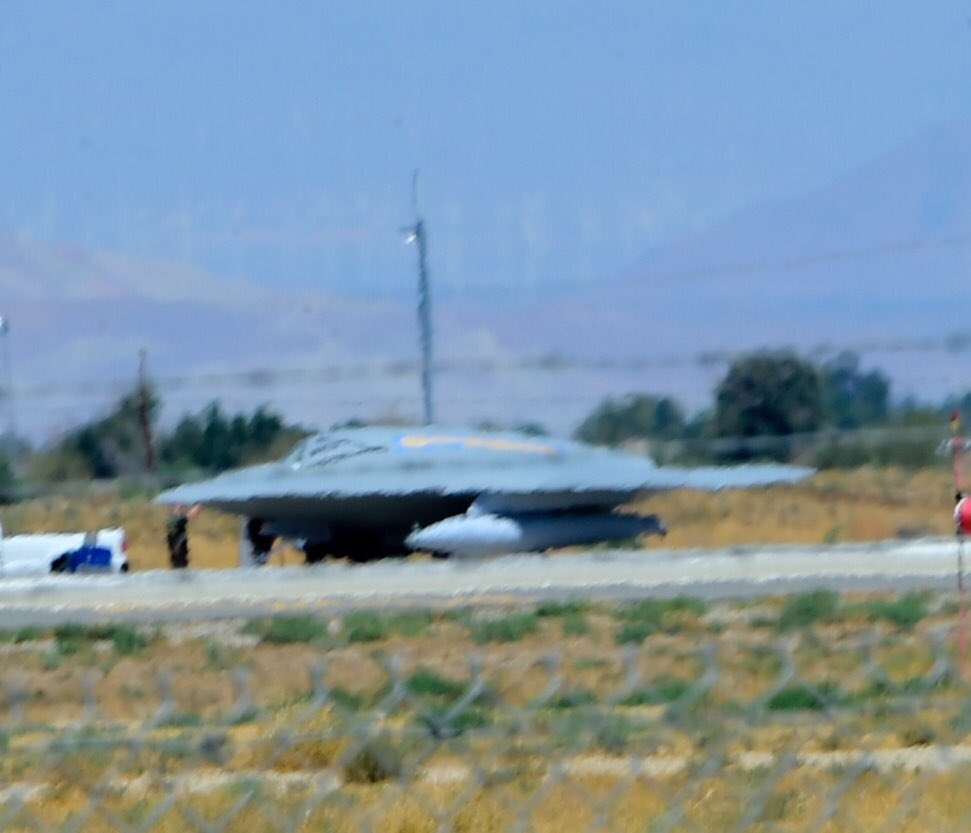
August 2017 - Modified X-47B at the U.S. Air Force's Plant 42 facility in Palmdale, California configured for aerial refueling as a flying test bed for MQ-25A program. Image courtesy of Aviation Week.
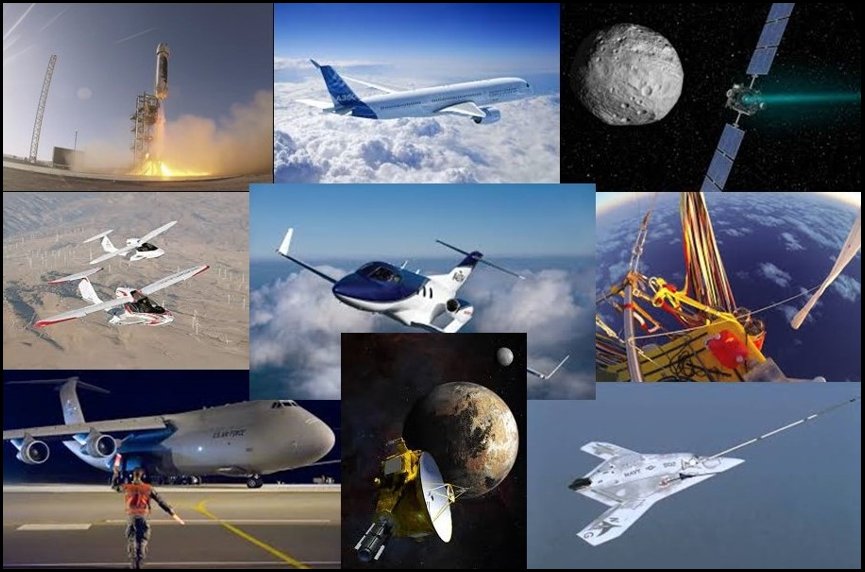
X-47B Aerial Refueling Demo Nominated for the Collier Trophy
2 February 2016 – The National Aeronautic Association announced today that the X-47B's autonomous aerial refueling demonstration last year is one of nine aerospace projects and accomplishments that will compete for the 2015 Robert J. Collier Trophy.
For 104 years, the Collier Trophy has been the benchmark of aerospace achievement. Awarded annually “… for the greatest achievement in aeronautics or astronautics in America”, it has been bestowed upon some of the most important projects, programs, individuals, and accomplishments in history. Past winners include the crews of Apollo 11 and Apollo 8, the Mercury 7, Scott Crossfield, Elmer Sperry, and Howard Hughes. Projects and programs which have been the recipient of the Collier include the B-52, the Polaris Missile, the Surveyor Moon Landing Program, the Boeing 747, the Cessna Citation, the F-22, and the International Space Station. The 2014 Collier was awarded to Gulfstream Aerospace for the development of the G650.
The 2015 Nominees are:
Airbus A350 XWB
Blue Origin’s New Shepard Team
C-5M Super Galaxy
Dawn Project Team
HA-420 HondaJet
ICON A5
New Horizons Project Team
Two Eagles Balloon Team
UCAS-D Autonomous Aerial Refueling Demonstration

The planned USN unmanned carrier-based aircraft should focus on:
— Naval Drones (@NavalDrones) February 4, 2016
22 April 2015 - The Navy conducted an autonomous aerial refueling (AAR) flight test with the X-47B today off the coast of Maryland and Virginia, marking the first time an unmanned aircraft has received fuel airborne using the probe-and-drogue method.
X-47B Salty Dog 502 engages the refueling probe of an Omega Air Refueling contracted aircraft. - Navair Video
While in-flight, the X-47B then autonomously maneuvered its fixed refueling probe into the tanker’s drogue, also known as the basket, the same way a Navy pilot would refuel a manned aircraft. The UAS received fuel and safely disconnected from the tanker, successfully completing the first contact flight.
This AAR evaluation completes the final objectives of the Unmanned Combat Air System demonstration program. Over the last few years, the X-47B conducted five carrier demonstrations, showcasing the Navy’s commitment to unmanned carrier aviation through operations in and around the flight deck and maturing an AAR capability.
X-47B Completes Joint Carrier Trials
(NAVAIR Press Release) 28 August 2014 - The Navy's X-47B completed its final test aboard USS Theodore Roosevelt (CVN 71) Aug. 24 and returned to its home base at Naval Air Station Patuxent River after eight days at sea.
While underway, the X-47B flew in the carrier pattern with manned aircraft for the first time and conducted a total of five catapult launches, four arrestments and nine touch-and-go landings, including a night time shipboard flight deck handling evaluation.
“This is another detachment for the record books; all tests were safely and effectively executed,” said Capt. Beau Duarte, Navy’s Unmanned Carrier Aviation program manager. “We have set the bar for the future of unmanned carrier aviation.”
Testing began Aug. 17 when the X-47B performed its initial cooperative launch and recovery cycle with an F/A-18. With its automatic wing-fold capability and new tailhook retract system, the X-47B met the program’s objective to demonstrate that carrier-based manned and unmanned aircraft could maintain a 90 second aircraft launch and recovery interval.
Throughout the week, the Navy/Northrop Grumman test team captured X-47B flying quality and recovery wind condition data to evaluate how the aircraft responds to wake turbulence during approach and landing. This data will be used to improve a simulation model for use with carrier-based aircraft.
The team also evaluated how the unmanned aircraft performed during the first night time taxi and deck handling operations aboard a carrier. Since the shipboard environment presents different challenges at night, this test was an incremental step in developing the operational concept for more routine unmanned air system flight activity.
“We conducted X-47B night flight deck operations to understand the human interface and suitability of the unmanned air vehicle and deck operator’s hand-held control unit in the night environment,” said Barbara Weathers, X-47B Unmanned Combat Air System lead. “These lessons learned will help with the development of future unmanned platforms.”
The Navy will continue to execute shore-based testing at Patuxent River to further the goal of seamless integration with manned aircraft and to refine best practices for the evaluation of future unmanned air systems.
Joint X-47B / Manned Aircraft Carrier Trials
17 August 2014 - The Navy's unmanned X-47B conducts flight operations aboard the aircraft carrier USS Theodore Roosevelt (CVN 71). The aircraft completed a series of tests demonstrating its ability to operate safely and seamlessly with manned aircraft. (U.S. Navy video/Released)
X-47B Completes First Night Flight
10 April 2014 - The Navy's X-47B conducts its first night flight April 10 over Naval Air Station Patuxent River, Maryland. (U.S. Navy Photo)
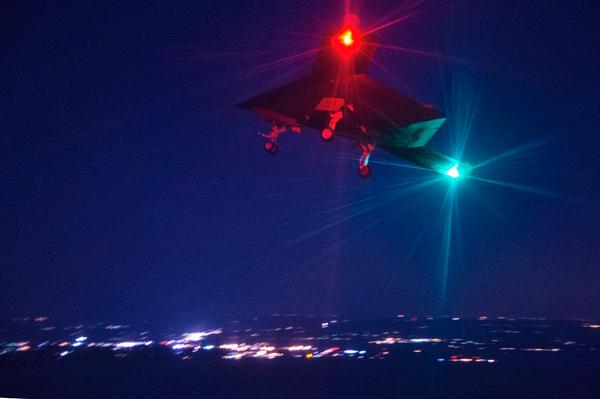
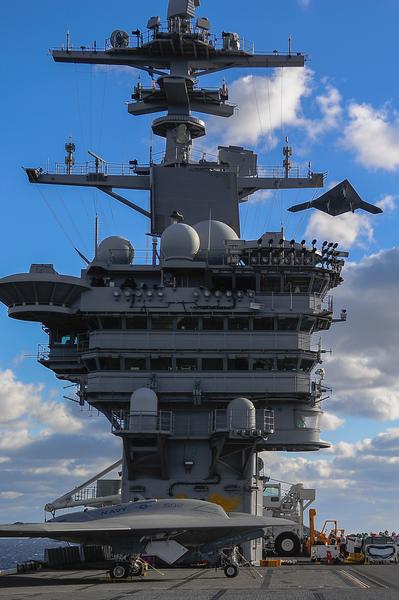
20 November 2013 - For the first time, both Navy X-47B Unmanned Combat Air System Demonstrators participated in tests with a single aircraft carrier. While one remained onboard USS Theodore Roosevelt (CVN 71), the second conducted flight operations. The X-47Bs performed multiple precise touch-and-goes, arrested landings, catapults, and commanded and autonomous wave-offs in November 2013. (Photo courtesy Northop Grumman)

X-47B Integration Testing on USS Theodore Roosevelt
10 November 2013 - The X-47B Unmanned Combat Air System Demonstrator (UCAS-D) conducted flight operations aboard the aircraft carrier USS Theodore Roosevelt (CVN 71).
The event, the most-recent in a series of carrier-based tests, demonstrated the integration of the latest in naval aviation technology with the most advanced and capable carrier.
This weekend's tests demonstrated the X-47B's ability to integrate with the carrier environment. The aircraft performed precise touch and go maneuvers on the ship to generate data that characterizes the environment in close proximity of the carrier flight deck. In addition, the aircraft took part in flight deck handling drills, completed arrested landings and catapult launches. Mission operators monitored the aircraft's autonomous flight from a portable command and control unit from Theodore Roosevelt's flight deck during each of its 45-minute flights.
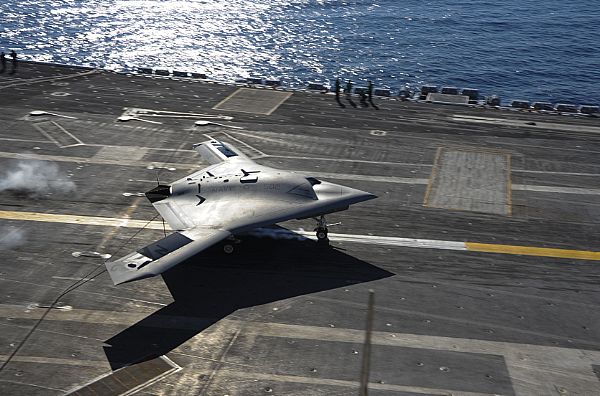
ALANTIC OCEAN (Nov. 9, 2013) The experimental X-47B Unmanned Combat Air System Demonstrator (UCAS-D) conducts an arrested landing aboard the aircraft carrier USS Theodore Roosevelt (CVN 71). Theodore Roosevelt is the third carrier to test the tailless, unmanned autonomous air craft's ability to integrate with carrier environment. (US Navy photo By Mass Communication Specialist Seaman Anthony N. Hilkowski/Released)
X-47B Program Completes Centennial Flight
18 September 2013 - The X-47B (AV-2) conducted the 100th flight for the Navy's Unmanned Combat Air System Demonstration (UCAS-D) program today at Patuxent River Air Station. The Navy UCAS program successfully completed all objectives for the carrier demonstration phase with the X-47B in July. During three at-sea periods over eight months, the X-47B conducted a total of 16 precision approaches to the carrier flight deck, including five planned tests of X-47B wave-off functions, nine touch-and-go landings, two arrested landings and three catapult launches.
PEO(U&W) Public Affairs
X-47B Surrogate Continues Aerial Refueling Testing
11 September 2013 – According to Naval Air Systems Command, the Navy and Northrop Grumman completed another phase of its Autonomous Aerial Refueling (AAR) test for the Unmanned Combat Air System Demonstration (UCAS-D) program.
From late August to 6 September in Niagara Falls, NY, a Calspan Aerospace Learjet outfitted with an inert refueling probe, the X-47B’s navigation, command and control, and vision processor hardware and software conducted a series of flights flying autonomously behind an Omega K-707 Tanker.
Captain Jaime Engdahl, UCAS program manager noted that the “the AAR segment of the UCAS-D program is intended to demonstrate technologies, representative systems, and procedures that will enable unmanned systems to safely approach and maneuver around tanker aircraft. We are demonstrating both Navy and Air Force style refueling techniques.”
“Demonstrating AAR technologies and standard refueling procedures is the next logical step for our demonstration program. The team has shown that we can use the same systems architecture, Rockwell Collins TTNT datalink, and Precision Relative GPS (PGPS) algorithms to extend the concept of distributed control of autonomous systems from the aircraft carrier to the airborne refueling environment,” said Engdahl. “The initial tests showed excellent system integration as well as good navigation and vision system performance.”
Previous flight tests with the Lear configured in this manner occurred in late 2011 and early 2012. Later this fall, the Lear surrogate will demonstrate end-to-end AAR concept of operations with a complete autonomous rendezvous, approach, plug, and safe separation utilizing its installed X-47B software and hardware.
Video Vault
"B-Roll" Footage
Northrop Grumman footage, including chase-plane shots and in-plane view of trap.
X-47B First Carrier Trap
10 July 2013 - The X-47B Unmanned Combat Air System (UCAS) demonstrator completed its first carrier-based arrested landings on board USS George H.W. Bush (CVN 77) off the coast of Virginia.
UCAS Touch and Goes
17 May 2013 - X-47B Unmanned Combat Air System (UCAS) demonstrator 502 conducts a touch and go landing on the flight deck of the aircraft carrier USS George H.W. Bush (CVN 77) in the Atlantic Ocean.
U.S. Navy video by Mass Communication Specialist Seaman Apprentice Travis Litke
First X-47B Cat Shot
14 May 2013 - The X-47B Unmanned Combat Air System demonstrator (UCAS-D) completed its first ever carrier-based catapult launch from USS George H.W. Bush (CVN 77) off the coast of Virginia, May 14. (U.S. Navy video)
Northrop Grumman: X-47B Carrier Suitability Testing Spring 2013
First X-47B Tailhook Landings
4 May 2013 - The X-47B Unmanned Combat Air System (UCAS) demonstrator completes its first shore-based arrested landing at Naval Air Station Patuxent River, Maryland.
ATLANTIC OCEAN (9 December, 2012) - The X-47B taxis on the flight deck of the aircraft carrier USS Harry S. Truman (CVN 75). (Northrop Grumman video by Dave Buchanan/ Released)
X-47B First Catapult Launch
29 November 2012 - The X-47B Unmanned Combat Air System (UCAS) Air Vehicle (AV-1) demonstrator successfully completed its inaugural land-based catapult launch at Naval Air Station Patuxent River, Md.
According to Northrop, the aircraft reached an airspeed of 151 knots during its 10 minute flight.
26 November 2012 - The Northrop Grumman X-47B AV-2 Unmanned Combat Air System (UCAS) demonstrator aircraft is hoisted aboard the aircraft carrier USS HARRY S. TRUMAN (CVN 75) for flight deck testing.
comments powered by Disqus